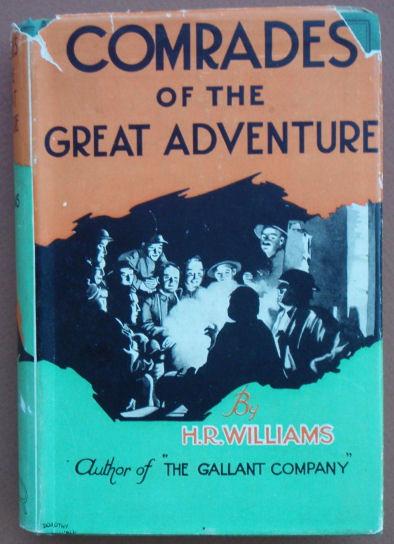Description
Title: Oswald Watt – A Tribute to his Memory by a Few Friends
Author: Stevens, Bertram & Watt, Ernest
Condition: Good Plus – Some damage insect damage(?) staining at top right corner of the book, which is carried on through out the book as shown in the pics.
Edition: 1st Edition
Publication Date: 1921
ISBN: N/A
Cover: Soft Cover without Dust Jacket – 69 pages
Comments: A tribute to and biography of Oswald Watt. Limited Edition of 550 copies.
Walter Oswald Watt (1878-1921), airman, grazier and merchant, was born on 11 February 1878 at Bournemouth, Hampshire, England, youngest son of Scottish-born John Brown Watt, merchant, and his native-born wife Mary Jane, daughter of G. K. Holden; his elder brother was Ernest Alexander Stuart Watt. After his mother’s death when he was aged 1, Oswald spent ten years in Sydney before being educated in England at Clifton College, Bristol, and Trinity College, Cambridge (B.A., 1899; M.A., 1904). Returning to Sydney in 1900, he was commissioned second lieutenant in the New South Wales Scottish Rifles and in 1902 was appointed an aide-de-camp to the State governor. He bought Howlong station at Carrathool and had interests in Llanillo, Goonal and Gunningrah, New South Wales, as well as in Queensland cattle-stations, Strathmore at Bowen and Glen Prairie at Rockhampton. On 27 September 1902 at St John’s Anglican Church, Toorak, Melbourne, he married Muriel Maud, daughter of Sir Hartley Williams. Having learned to fly at Salisbury Plain, Wiltshire, England, Watt set up as a civilian pilot in 1911.
Following his divorce in 1913, he spent several months flying his Bleriot XI in Egypt and travelled to France in 1914. Thinking that Britain would not be involved in a European war, he offered his services and his plane to the French and became an ordinary soldier in the Aviation Militaire section of the French Foreign Legion. He was awarded the Légion d’honneur and the Croix de Guerre, and given the brevet rank of captain. As he was not a French citizen, he could not be placed in a position of command. In 1916 he transferred to the newly formed Australian Flying Corps, with the rank of captain and command of B Flight, No.1 Squadron, then stationed in Egypt.
In September he was promoted major and took command of No.2 Squadron which was being formed in Egypt. The new squadron was sent to England for training in early 1917 and arrived on the Western Front in September. Charles Bean visited No.2 Squadron after the battle of Cambrai and recorded his impressions of its work: ‘They are winning themselves a magnificent name, this first Australian fighting squadron … It is Watt who has worked them up to this remarkably high level of conduct and general tone’. As squadron commander Watt worked long hours, rising at 5 a.m. to give moral support to his dawn patrols; according to Bean, the heavy fighting at Cambrai had left Watt ‘very wan…he fell asleep after dinner’. In February 1918 Watt—by then a lieutenant-colonel—was promoted to command the four squadrons (Nos. 5, 6, 7 and 8) of the Australian training wing at Tetbury, Gloucestershire, England. He excelled as a leader who inspired his crews with his ideals of service. The novelist W. J. Locke visited him after the Armistice and noted ‘there was not one who … did not confide to me his pride in serving under a leader so distinguished’.
Watt came back to Australia in 1919. He had been appointed O.B.E. that January and was elected president of the New South Wales section of the Australian Aero Club. After the war he lobbied politicians for improved safety measures in civil aviation; he was known for his generosity to former A.F.C. comrades and for his efforts to find them employment. In 1920 he was offered the position of controller of civil aviation, but declined because of business commitments: he was a partner in Gilchrist, Watt & Sanderson Ltd, the family shipping firm, and a director of the Australian Alum Co., the Great Britain Tin Mining Co., the Sogeri Para Rubber Co. and Art in Australia Ltd. ‘Toby’ Watt drowned at Bilgola Beach, Newport, New South Wales, on 21 May 1921. He was buried with full military honours and his ashes were interred in St Jude’s churchyard, Randwick; his estate was sworn for probate at £176,846; he was survived by his only son.








